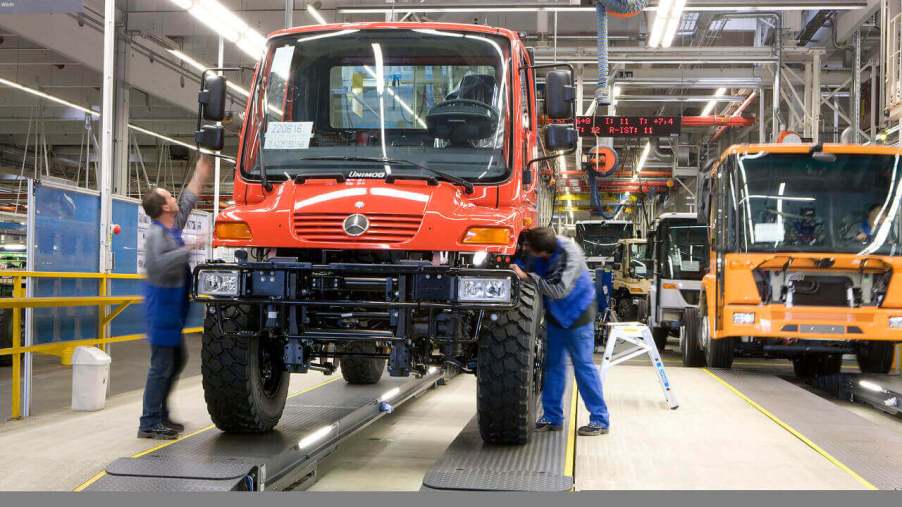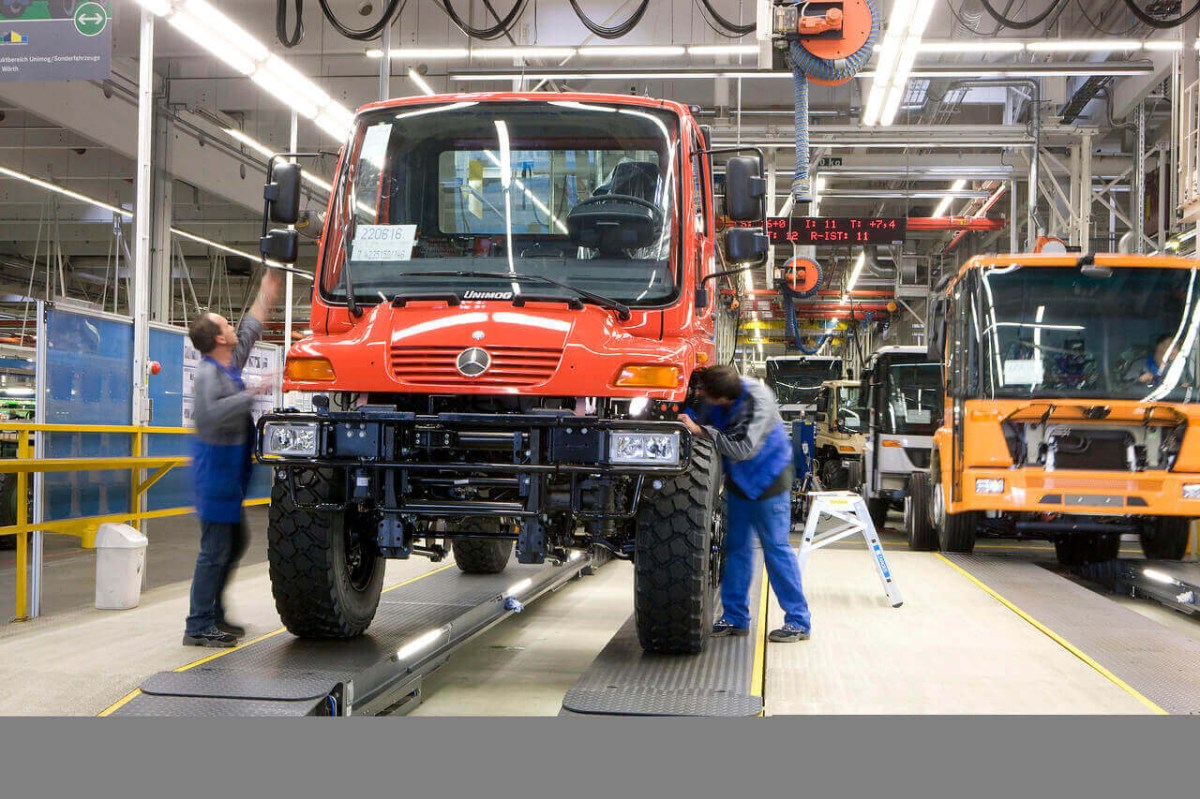
What Is the Mercedes-Benz Unimog?
The Mercedes-Benz Unimog truck is an off-road vehicle without equal. With its enormous proportions, burly construction, and quirky appearance, this German ATV is like nothing else on the road. The Unimog has a long and fascinating history, from plowing snow in harsh environments to serving in fire departments.
Let’s look at how the Unimog came to be and where it is today.
The Mercedes-Benz Unimog’s early generations: 1947-1975

Expeditionmeister describes the history of this unique vehicle and how Unimog stands for “Universal Motor Gerat,” with “gerat” being German for device. Manufactured by Boehringer with a focus on agricultural applications, the 70200 series Unimog used all-wheel drive, oversize wheels, and towering ground clearance to go where a tractor couldn’t.
As noted by Motor1, the Unimog’s evolution began with the 2010 series in 1951, when Daimler-Benz took over production. The famed German automaker enhanced production capabilities and modified the original design, including new mudguard wings, welded axle lids, and a larger diesel engine.
In 1953, significant changes arrived with the 401 and 402 editions of Unimogs. Mercedes-Benz added an enclosed cabin and their three-star emblem, creating a classic look still recognizable today. This stout truck could do almost anything, with PTO front and rear to power auxiliary equipment, a flat bed with a 2,200-lb payload, and switchable all-wheel drive. And the 402 model offered an 83-inch wheelbase, 15 inches longer than the 401’s.
The Unimog 404 brought significant changes in 1955, taking the renowned truck beyond the agricultural realm. With an inline-6 engine, a 3,307-lb. payload, and flexible ladder frame, the 404 could serve fire departments, military units, and construction companies.
1957 Mercedes-Benz Unimog 411 continued the model’s continual rise in performance and utility. As with previous models, short and long-wheelbase models were available. A larger steel cab brought more cargo space on long-wheelbase editions, and the rounded design set a new standard among commercial vehicles.
Built for customers who wanted an even stronger Unimog, the 406 series added more powerful diesel engines, a new drivetrain, and a new hydraulic system. And drivers could now choose from an enclosed cab, cabrio cab, or enclosed double cab. And the design repeatedly proved itself over the decades, with production lasting from 1963 through 1989.
In 1975, the 425 and 435 series Unimogs continued the theme of heavy-duty upgrades and added a modern, creased cab in place of the traditional rounded version. Compared to the 425, the 435 features an extended wheelbase and stronger engines. The U1300 L model of the 435 was the most popular, seeing use with the German military and many fire departments.
The next evolution: 1985-2015
Unimog trucks built a reputation for unmatched capability through several generations of production. But Mercedes-Benz kept pushing the envelope with subsequent designs, beginning with the 407/427 series in 1985.
The 407 light-duty and 427 medium-duty Unimogs replaced previous generations, bringing new styling, engines, and chassis. These new editions made the Unimog range larger than ever, from the light and quick U 600 with 60 hp to the three-axle U 2400 with 240 hp.
Then, in 2015, Mercedez-Benz raised the bar again, releasing a series of Unimogs with cleaner engines, increased comfort, and improved fuel efficiency. The entry-level models are the U 216 and U 218, followed by the U 318, U 423, U 430, U 527, and U 530. The first number of the model designation indicates the truck’s size, and the second two are the initial numbers of its horsepower output. So the U 218 is a U 200 edition putting out 180 horsepower.
The off-road-focused Mercedes-Benz Unimog U 5000 also debuted in 2015, with 30 degrees of axle articulation, 600 mm of torsional flex, and 44/51 front/rear departure angles. From its enormous tires to its towering cabin, it’s apparent the Unimog 5000 can handle anything.
The current generation Mercedes-Benz Unimog
Today, the Unimog continues on, going where almost no vehicle can, and it provides indispensable utility to militaries, fire departments, and farmers, among others.
The Mercedes-Benz Unimog U 4000/U 5000 combines decades of design and manufacturing experience, resulting in a vehicle unmatched in capability and versatility. It’s clear Mercedes-Benz used knowledge gained from past models to revise and refine every detail, creating a singular vehicle.
Features like portal axles, chassis torsional flex, and clean diesel engines set the Unimog apart from competitors, and its classic appearance makes it stand out on the road.



